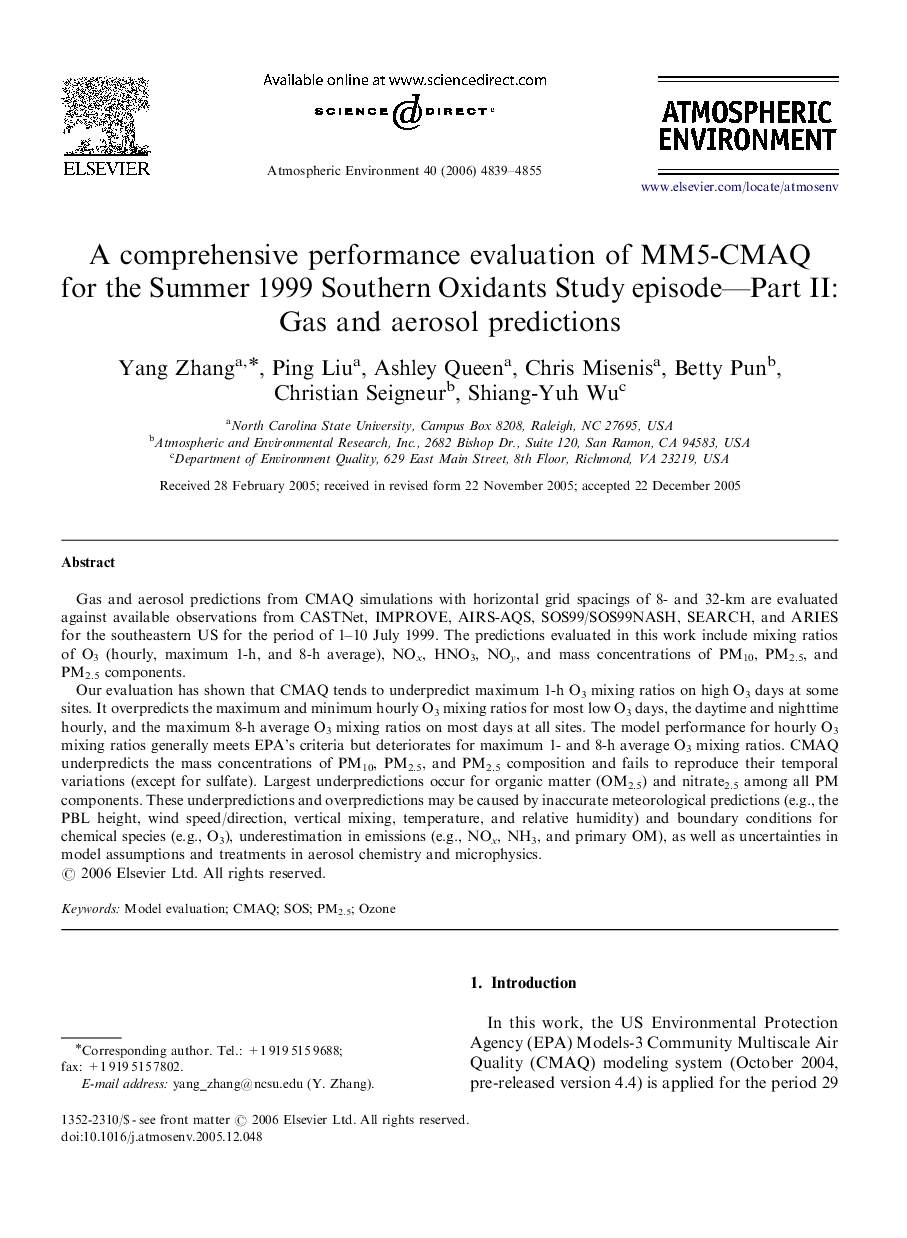| Article ID | Journal | Published Year | Pages | File Type |
|---|---|---|---|---|
| 4444487 | Atmospheric Environment | 2006 | 17 Pages |
Gas and aerosol predictions from CMAQ simulations with horizontal grid spacings of 8- and 32-km are evaluated against available observations from CASTNet, IMPROVE, AIRS-AQS, SOS99/SOS99NASH, SEARCH, and ARIES for the southeastern US for the period of 1–10 July 1999. The predictions evaluated in this work include mixing ratios of O3 (hourly, maximum 1-h, and 8-h average), NOx, HNO3, NOy, and mass concentrations of PM10, PM2.5, and PM2.5 components.Our evaluation has shown that CMAQ tends to underpredict maximum 1-h O3 mixing ratios on high O3 days at some sites. It overpredicts the maximum and minimum hourly O3 mixing ratios for most low O3 days, the daytime and nighttime hourly, and the maximum 8-h average O3 mixing ratios on most days at all sites. The model performance for hourly O3 mixing ratios generally meets EPA's criteria but deteriorates for maximum 1- and 8-h average O3 mixing ratios. CMAQ underpredicts the mass concentrations of PM10, PM2.5, and PM2.5 composition and fails to reproduce their temporal variations (except for sulfate). Largest underpredictions occur for organic matter (OM2.5) and nitrate2.5 among all PM components. These underpredictions and overpredictions may be caused by inaccurate meteorological predictions (e.g., the PBL height, wind speed/direction, vertical mixing, temperature, and relative humidity) and boundary conditions for chemical species (e.g., O3), underestimation in emissions (e.g., NOx, NH3, and primary OM), as well as uncertainties in model assumptions and treatments in aerosol chemistry and microphysics.
